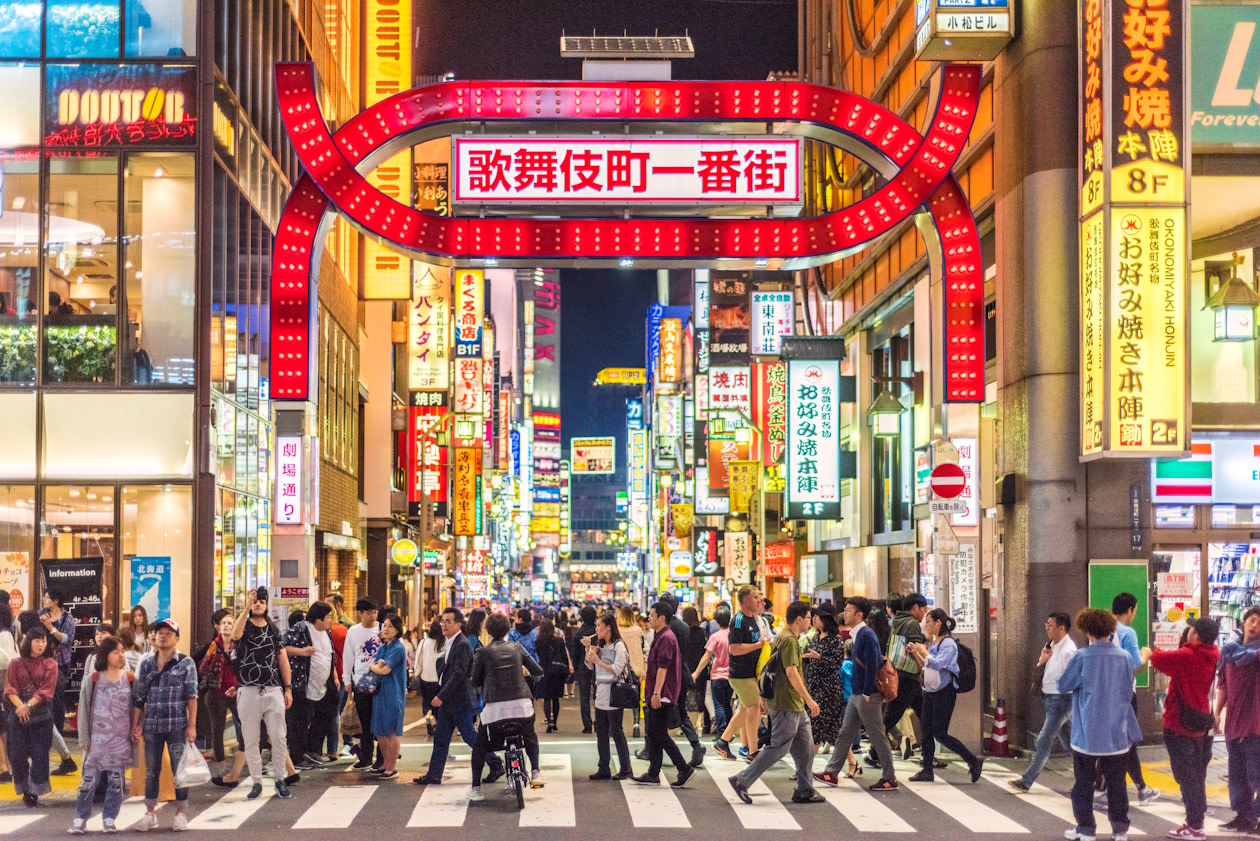It’s hard not to be struck by the paradox of modern Japan.
One minute, you’re walking past temples that haven’t changed in centuries, the next you’re buying a Pikachu bento box from a contactless vending machine.
Take a stroll through any Tokyo district and you’ll find it – ‘kawaii’ (Japanese word meaning ‘cute’) culture woven into everything from convenience stores to train station advertisements. Even the airline safety videos on the way there!
Brands like Nintendo and Sanrio (home of Hello Kitty for those not in the know) aren’t just cultural exports – they’re part of a national identity.
But beneath this lies corporate determination. The country is steeped in ritual and hierarchy, but it’s corporate and economic environment is steadily moving, providing opportunities for investors.
This article isn’t personal advice. If you’re not sure an investment is right for you, ask for financial advice. Remember, all investments and any income from them can rise and fall in value, so you could get back less than you invest. Past performance also isn’t a guide to the future.

Beneath the surface
Tradition still defines much of Japan’s business environment and beyond. There’s respect for process and structure. This creates a culture of efficiency – trains really do run to the second – but it also means many businesses have historically been slow to adapt.
That’s starting to change.
Corporate activism and shareholder engagement is on the rise, and companies are responding.
An example is the convenience store giant 7-Eleven.
In urban areas you almost can’t turn a corner for seeing one – and for good reason. They’re chock full of snacks, quick meals, and treats to delight both locals and tourists. (Highlights for me were Suntory’s canned lemon sours, Meiji’s mushroom chocolate biscuits and traditional snacks like Onigiri).
The shop’s parent company, Seven & I Holdings, recently rejected a takeover offer from a foreign business. But discussions are ongoing, meaning there’s still potential for this Japanese company to be taken over by a foreign entity.
This is all happening with relatively little government interference, which is unusual as foreign takeovers haven’t been favoured by the state in the past.
All of this reflects a more open stance on foreign investment from the government and a growing emphasis from companies on shareholder value.
Another example of this is when Japanese companies announced share buybacks in April which tripled on the previous year. It’s another sign that businesses are thinking more about how to more efficiently run their finances and recognise shareholders.
Tariffs, trade, and reflation – what investors need to keep an eye on
We’ve recently seen some improvement in investor sentiment towards Japan, with foreign investors buying a record number of Japanese shares and bonds in April. That said, Japan still has its challenges.
Like many across the globe, Japan’s exporters face the threat of high tariffs from the US. The country faces a 25% tariff on car, steel and aluminium exports and 24% on many other goods.
It’s a story the Japanese are clearly not overlooking.
Being in Japan on so-called ‘Liberation Day’, Trump appeared frequently on train and TV screens. At this point Japan had the potential to be in a decent position to negotiate with the US, or at least it thought it did.
The country is the biggest provider of foreign investment into the US, and a lot of big companies, like Toyota, have factories there.
Japan is also often considered America’s closest ally in Asia.
While Japan was one of the first to start tariff negotiations, the US has so far said it won’t budge on the 10% levy that applies to all countries, or the tariffs on cars and steel products.
If things don’t turn out the way Japan hopes, exporters’ earnings could come under pressure.
Toyota, for example, has already seen, and expects to continue to see, a significant drop in profits.
We’ve since seen the Bank of Japan cut its 2025 growth forecast from 1.1% to 0.5%. And the return to inflation in recent years, following decades of stagnant growth, looks like it could be on pause.
Japan’s annual inflation rate was 3.6% at the end of March 2025, down slightly from 3.7% in the previous month. But while inflation has been moderate overall, it’s been uneven.
The prices of everyday staples and food items like eggs, rice and cabbage have risen significantly.
As tourists we didn’t notice this much – a weaker Japanese yen in recent years has made prices more palatable for us. But it’s a different story for domestic consumers.
Some train fares also hadn’t risen since the late 1980s, but that’s changing too. The previously government-owned Tokyo Metro’s IPO last year signalled a shift in two ways.
Firstly, a second fare increase was recently signalled by the business – the first one in almost 30 years happened just two years ago. This might be unwelcome for busy commuters but could improve company earnings.
Secondly, it once again demonstrates the government's increasing willingness to relinquish control over corporates, and for companies to have more flexibility to improve shareholder returns.
Innovation in daily life
What also stood out on the ground was the way digital services blend into daily life. Train journeys saw most commuters glued to their phones – whether that be reading, watching anime from streaming services, or perusing social media. In all instances, companies are poised to profit.
Another example is Rakuten, which has evolved beyond its e-commerce roots. Its fintech and payments arms are now integral to how younger Japanese live, spend, and save.
This doesn’t mean the old guard won’t succeed though.
Things are currently uncertain for blue-chip exporters and auto companies, but this might present opportunities for investors looking to take a more contrarian approach or seeking undervalued companies.
Improved corporate governance and a more activist shareholder base could lead to positive changes across the board. But in this uncertain world, short-term volatility should be expected not only in Japan, but across the globe.
3 fund ideas to invest in Japan
Investors excited about the longer-term prospects for an economy that really is quite different from any other in the world could consider some of our favourite picks for investing in Japan.
The Wealth Shortlist features funds chosen by our analysts for their long-term performance potential.
Remember though, investing in funds isn't right for everyone. Investors should only invest if the fund's objectives are aligned with their own, and there's a specific need for the type of investment being made. Investors should understand the specific risks of a fund before they invest, and make sure any new investment forms part of a long-term diversified portfolio.
For more details on each fund and its risks, please see the links to their factsheets and key investor information below.
Man GLG Japan CoreAlpha
Man GLG Japan CoreAlpha focuses on larger Japanese companies.
The fund managers use a contrarian approach often known as 'value investing'. Their discipline in buying out-of-favour companies and gradually selling them as they recover sets them apart.
It means autos, like Nissan and Toyota, currently make up some of the fund’s largest investments. The fund also has exposure to steel and railway companies, as well as a stake in the convenience store operator Seven & I Holdings.
The managers tend to invest in a relatively small number of companies, meaning each one can make a significant difference to how the fund does, but it also increases risk.
We think this fund could work well in a global shares portfolio designed to provide long-term growth. Its focus on large companies means it could sit well alongside a Japanese equity fund focused on medium-sized or smaller companies.
Baillie Gifford Japanese
Baillie Gifford Japanese uses a different investment style known as growth investing. This means it focuses on companies with high or sustainable growth potential and is less likely to invest in companies significantly out of favour.
This sees the fund invest in some more technology-related companies, such as Rakuten, Nintendo, and Sony. It also invested in Tokyo Metro after it listed on the Japanese stock market.
The fund could help diversify a global investment portfolio. Its focus on high-quality companies with the potential for above-average earnings growth means it could work well alongside other value-focused funds.
iShares Japan Equity Index
iShares Japan Equity Index provides low-cost exposure to large and medium-sized companies in Japan.
Instead of actively choosing a smaller number of companies it expects to perform well, it aims to track its benchmark, the FTSE Japan, by investing in every company in the index.
This means it invests in some companies held in the Man GLG and Baillie Gifford funds. But it also owns smaller investments in other businesses, like entertainment company Sanrio, soy sauce producer Kikkoman and motorcycle manufacturer Yamaha.
The fund invests in some smaller companies. Smaller companies have greater growth potential but can experience more extreme ups and downs. This can benefit the fund in the long term but adds risk.
The fund also has the ability to lend some of its investments to others in exchange for a fee in a process known as stock lending, which adds risk if used.
An index tracker fund is one of the simplest ways to invest. This fund could be a great, low-cost starting point to invest in Japan in a portfolio aiming for long-term growth.
Apr 2020 to Apr 2021 | Apr 2021 to Apr 2022 | Apr 2022 to Apr 2023 | Apr 2023 to Apr 2024 | Apr 2024 to Apr 2025 | |
|---|---|---|---|---|---|
Man Japan CoreAlpha | 19.65% | 9.70% | 14.56% | 22.03% | 2.08% |
Baillie Gifford Japanese | 29.48% | -12.06% | 0.05% | 2.73% | 1.97% |
iShares Japan Equity Index | 17.96% | -4.52% | 5.32% | 17.75% | 1.46% |
IA Japan | 21.11% | -6.03% | 5.37% | 16.32% | 3.41% |


